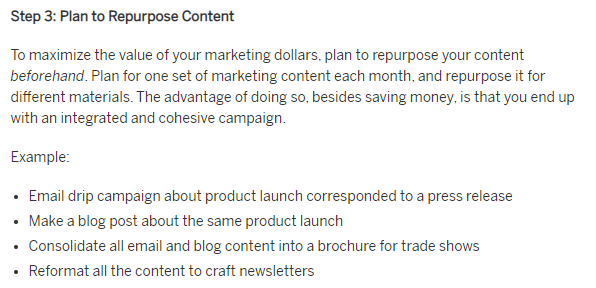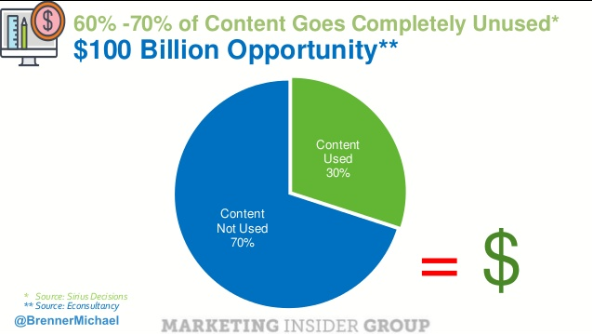Why you should improve your existing content rather than repurposing it
Thanks to all who sent answers! Many have been right 😉 The URL is: https://t.co/iatPgmwDDq the evergreen “remote work trends” post in Remoters. I updated on June 13 to add a section about the Coronavirus impact & FAQpage Schema. On June 15 rankings improved for a few top terms.. pic.twitter.com/3Wgj3HVXWP
— Aleyda Solis (@aleyda) June 18, 2020
Evergreen content is always relevant for users because it addresses topics that are never out-of-date. It requires recurring upgrades to maximize the number of clicks and conversions it generates, its engagement rate, etc. In a recent conversation on Twitter, I came across the SAP content marketing strategy and I was impressed by the results. Not so much by the volume of views, clicks and so on generated by SAP, but rather by all the strategic questions their content team has solved to be successful. My main take-away: do not limit yourself when it comes to updating your content. Optimizing your existing copy VS. writing a new one is a real business question. Let’s dig option #1 and see how to upgrade your content and leverage the power of available data to provide a better experience to your audience.
Hey great, this seems like a great #contentstrategy presentation. I was wondering if I can find the the full deck somewhere online? Thanks in advance
— Franck NLEMBA (@Franck_Nlemba) May 3, 2020
Not everyone can repurpose content on various platforms
Content diversification involves too many channels
Content diversification is a key issue in the content marketing world. The principle is simple: first you publish an article on your blog or website about, let’s say “savings”, then a few days or weeks later you design an infographic on the same topic, record a podcast, a video, and so on and so forth. These tactics have been widely discussed online for a while now. If you need any convincing, have a look at this 2013 blog post from SAP:

The logic here is that your audience is probably accessible through various channels and that it totally makes sense for you to reach them where they are.
Content diversification is not efficient to target the intent
The user intent is the goal the user is trying to achieve. The following query on Google “how to save money for a house while renting” is clearly from someone who is looking for ways to purchase a house. This person is quite low in the funnel and close to the conversion. Let’s see what Google suggests:

But which content that person is consuming on YouTube? Netflix? Shall you produce a podcast on savings tactics or on hot areas to buy a house in five years? These are all wrong questions you shouldn’t ask yourself in order to maximize your ROI on this journey.
Instead, improve your existing content and avoid diversification
Honestly, after 15 years helping my clients with their content production, I have rarely seen a content team spend time optimizing existing content. Of course, it will be a waste of your content budget if you are not able to upgrade your existing content by addressing new needs of your target audience. It looks like editorial teams prefer to write new content. In my opinion, you should spend 25%-40% of your budget to rework and optimize the content that has already been exposed to your audience because you will get results faster that way.
3 reasons to support this recommendation:
1-The topic you are trying to cover is already covered online so you are not original
The opportunity is to find questions that are unanswered and improve your existing content to better cover them. Don’t forget most of the content produce online is not used because it is not tied to a business case:

2-If your content is the best on that topic you will earn a lot of clicks from Google.
Google is trying to rank websites that are relevant for a given topic. You will be relevant only if your article is full of facts and resources that are unique and valuable enough to attract links and mentions. But this requires a lot of work.
3-Users love fresh content.
It’s like the weather: we are not looking for yesterday’s weather but the weather for today and the upcoming days. When it comes to online sales, people are looking for hot deals. It is not surprising if Twitter, Facebook, LinkedIn & co all offer a “current trends” feature.
How often should you improve your articles and how to do it right?
If you can, improve your article every month
1-Learn more about recent evolution in the linguistic field
I suggest you to read about text mining techniques and find out how algorithms analyze text in order to understand it like a human. This article from Wikipedia will help you grasp some knowledge about NLP. You can also browse our Glossary to get the basics on Content Intelligence concepts such as Entities, Salience and Semantic Web. This is very trendy and extremely important because your article is going to be analyzed by algorithms and they control the distribution of your article, therefore your ROI.

2-Diversify your content ideas sources.
If you can, it is very relevant to get feedback from the field thanks to your colleagues:
- Customer support people will provide you with the most recent clients complaints.
- Frontline employees will feed you with the top questions from end-users.
3-Look at related topics that are not covered…
… and add a paragraph directly in the existing related article.
Obviously try to target intent with low competition. Various tools such as Google Adwords Keyword Planner, Moz, Ahrefs, etc. will help you to measure the competition for a given keyword in search.
4-Identify the search terms or queries used to reach to your pages
Get them from any amaytics tool such as Google Analytics or Google Search Console and then run a keyword research with one of your favorite tools to improve your article.
5-Finally look at other forms of content (map, audio, video, …) and add them to the existing copy
Mobile Moxie is a great tool to help you analyse SERPs based on your location.
Conclusion
Due to the heavy online competition, it totally makes sense to update and optimize your existing content in order to increase its ROI. Even if content teams prefer to write new pieces of content, it may be relevant to spend at least 25% of your time and budget on existing content. Please don’t forget that content will help you to sell and grow your business. Every click counts: instead of going after 1K hypothetical visits per month, let’s convert 100 more users per month through our content.

